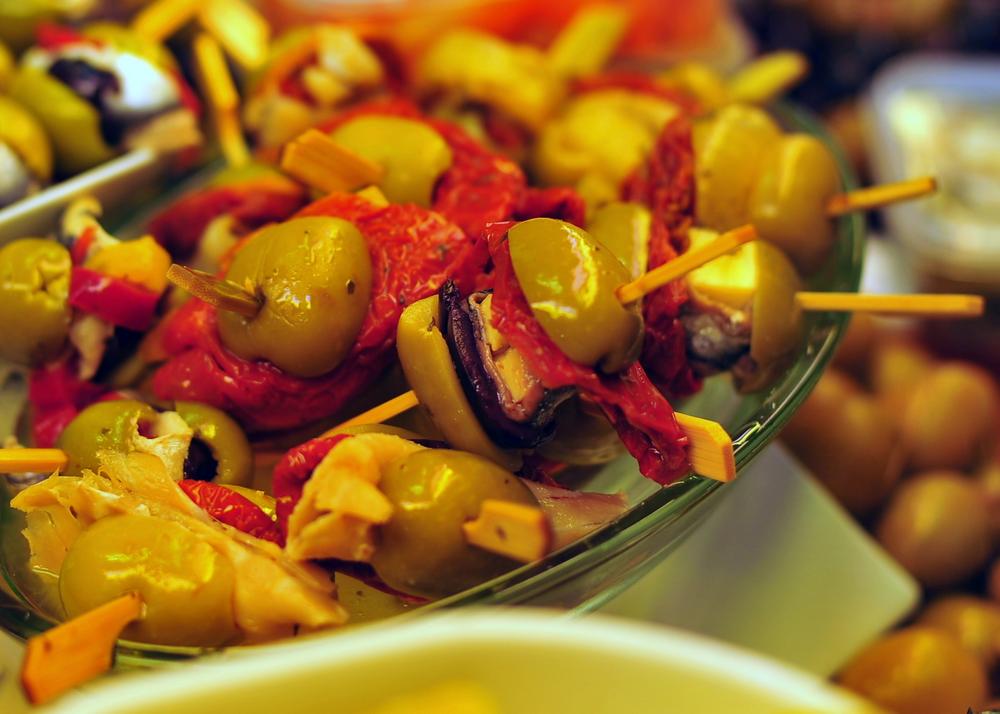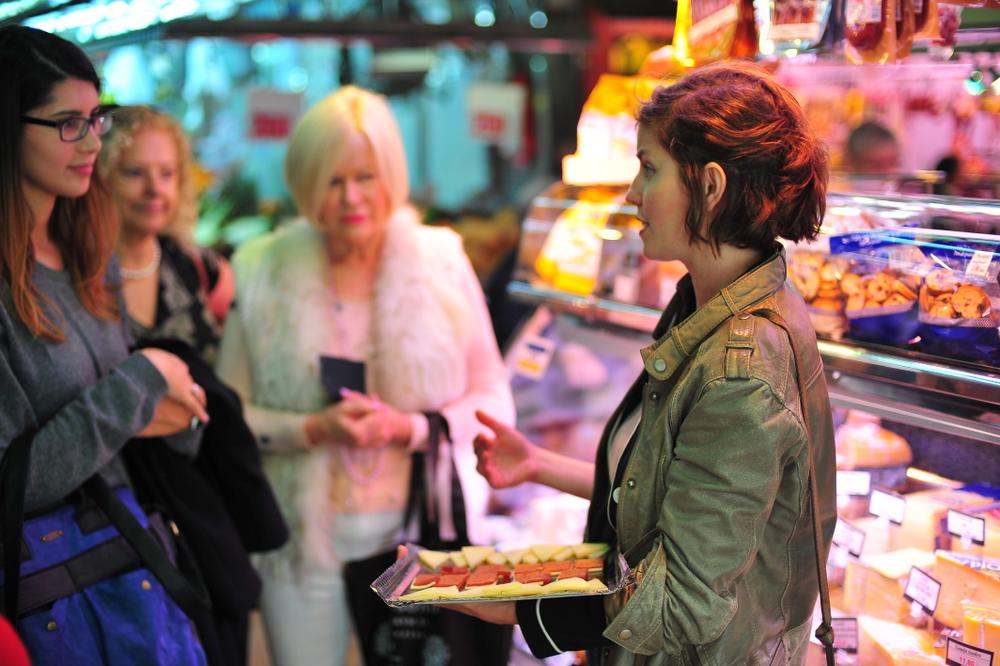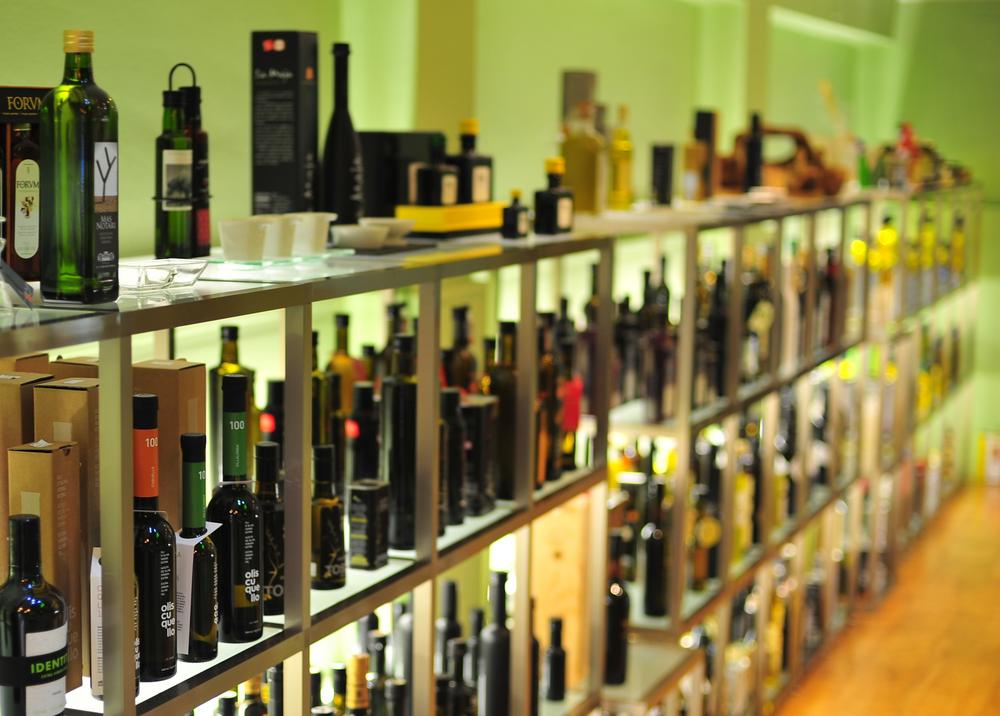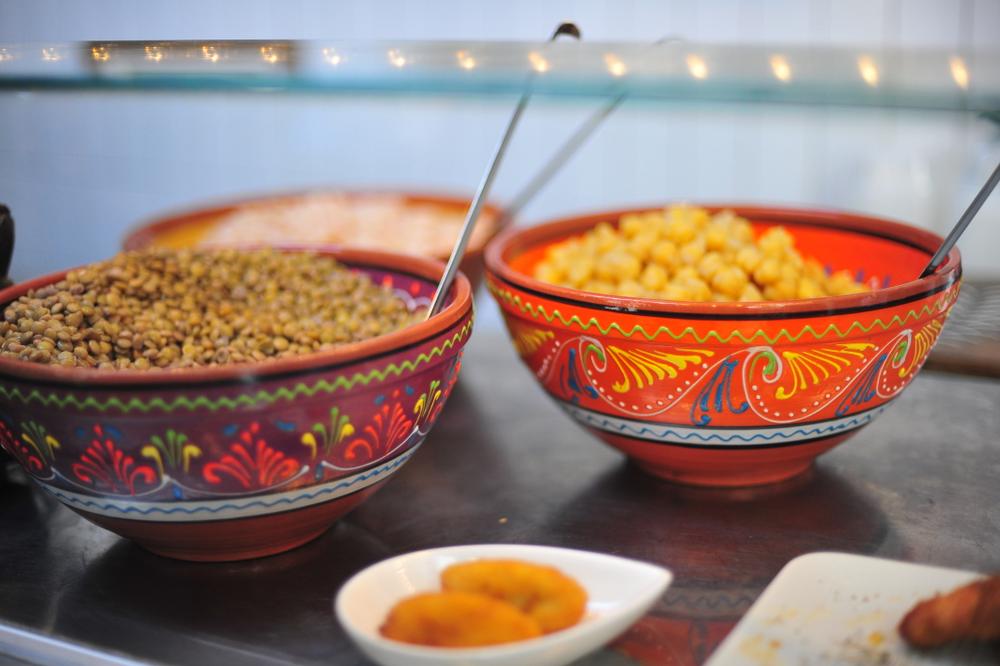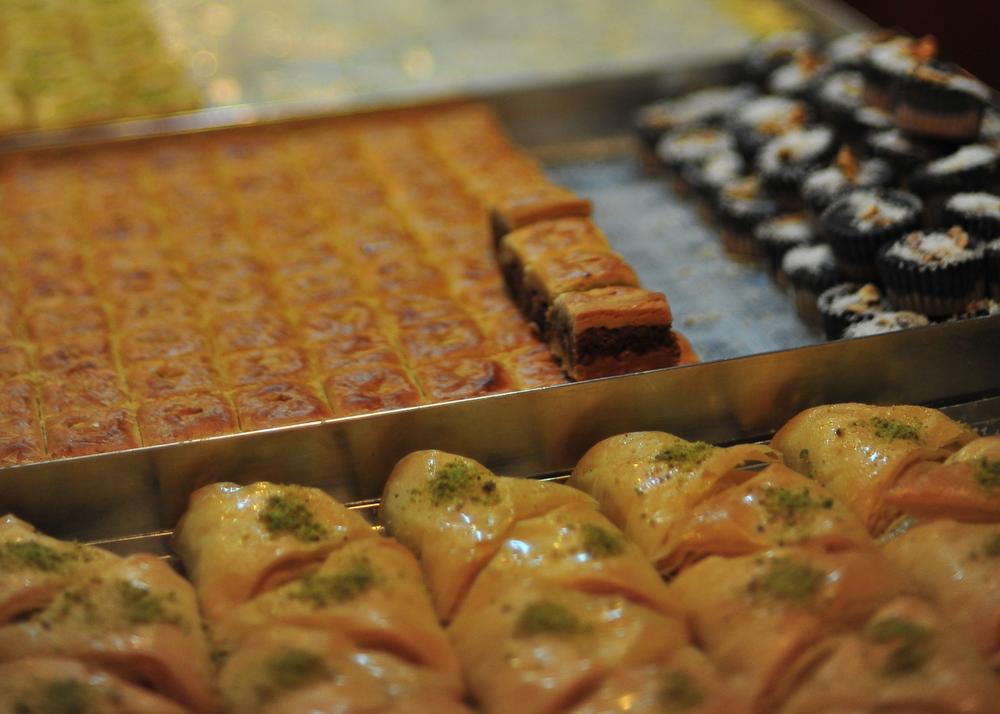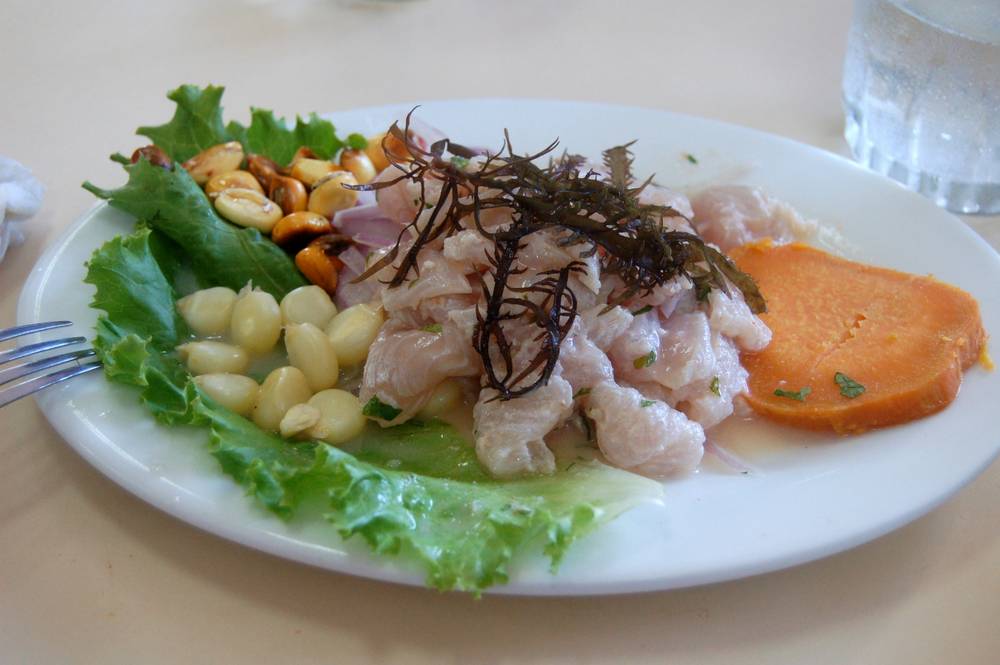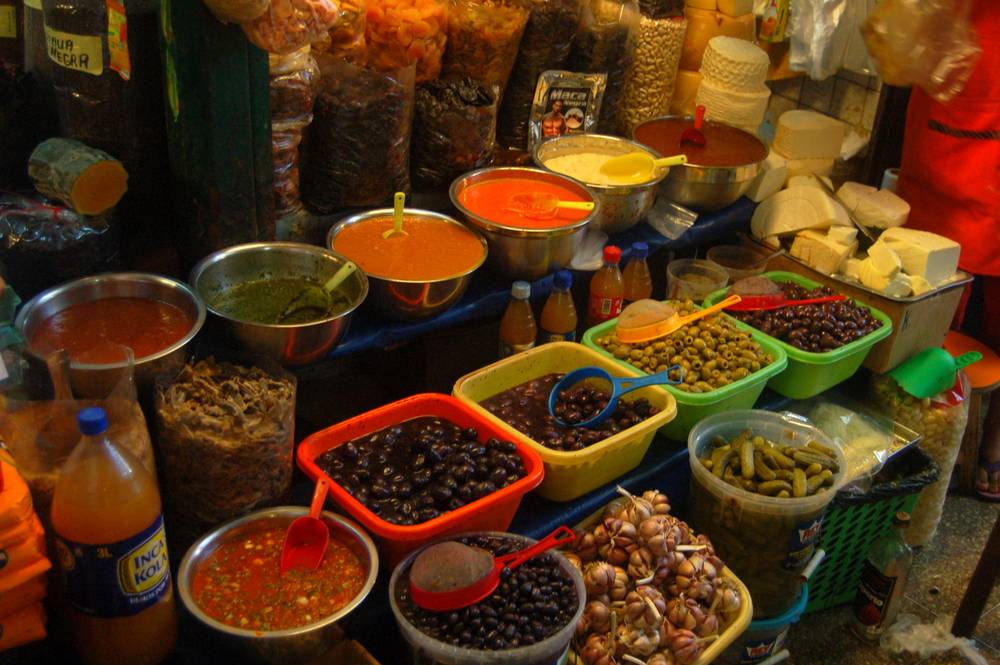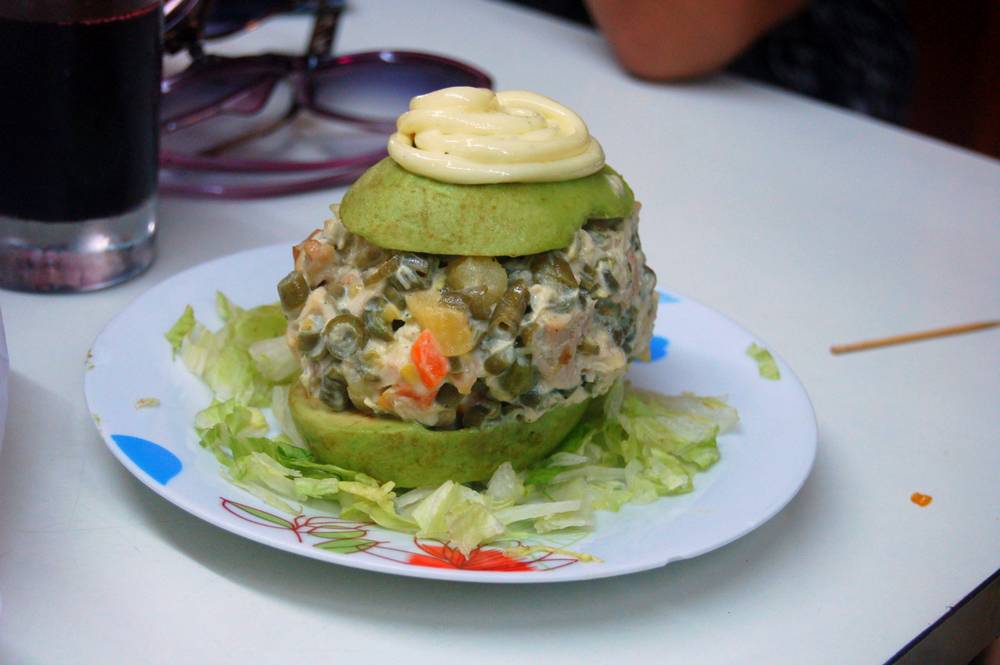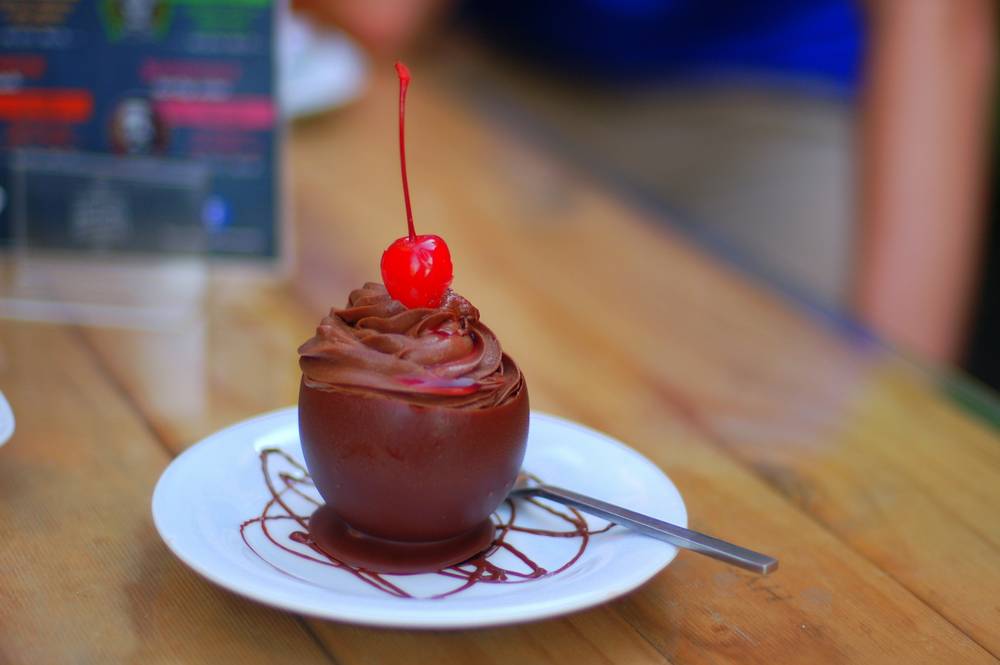Despite being of the ‘eat-to-live’ variety, we definitely enjoy trying new things while traveling.
While not always weird, there’s a definite link between food and culture, and it’s one we sometimes explore.
Start with Devour(ing) Barcelona
Welcome to Devour Barcelona, a walking food tour offering family-run and owner-operated Catalan cuisine in Barcelona, Spain. The goal of the tour, beyond tasting plenty of different elements, was to get a feel for some of the Catalan history and culture that’s not always evident when meandering through Barcelona. 2014 was the 300 year anniversary of their loss of independence, and even today the Catalan language remains somewhat repressed.
Start with some cava, a sparkling, champagne-like drink that uses a different grape than champagne. Easier conditions to grow and higher production, but very much like champagne. A small but good grilled botifarra sandwich accompanies.
Later on, get some olives on a small skewer as seen above – it’s best eaten in one large bite. Giuseppe there is the expert on olives, full stop, end of story.
Next up: Spanish and Catalan cheese. Try some urgelia (cheese and a layer of sweets), idiazabal (a light and smoky sheep’s milk cheese), and chego (a traditional, dry cheese that won ‘best cheese in the world’ 8 years in a row).
While in the market, note the hanging tomatoes – only used for spreading on day-old bread (pan con tomato). Since they’re on the mushy side, they bring some new life to the aging bread.
Oli Sal (literally ‘oil and salt’) likely offers the biggest selection of extra-virgin olive oil in Spain, and probably Europe. 45% of the world’s olive oil is produced in Spain, followed by Italy and Greece.
It’s here where the idea of a food tour gives way to a tasting tour that educates people about the country’s offerings. First-pressed and cold-pressed – two common terms used in marketing – mean nothing in reality. The ‘virgin’ label used in some marketing means it’s grade B that couldn’t be called ‘extra-virgin’ (freshly squeezed olive juice), or the juice of good olives. Spain’s really strict on this, while the US has no (or very few) regulations regarding ‘extra virgin’. The moral of the story: Know your brands.
Choose between a blue tasting cup used by pros or pour directly from bottle, then get started on tasting. Olirium is made north of Barcelona, coupage is oil made of a mix of two olives and smooth, olicatessen is smooth, made south of Barcelona, and unfiltered. It’s more natural but has a shorter shelf life, about 2 months. Last, try the piqual, which has an intense olive flavor and spicy aftertaste – watch out!
Some long-cooked beans give busy office workers a connection to a more traditional time.
Barcelona has earned a reputation as a metropolitan city, and as such draws people from around the world to set up shop. Finish up here with a wide choice of Arabian pastries – and naturally, there’s plenty
It’s a fair bit of walking around some of Barcelona’s lesser-traveled streets, but the tastes you’ll find are all authentic. Nine courses in all means you’ll be tasting plenty of offerings across the board. Patronizing locally-owned stores also means you’re contributing directly to the local economy. My only complaint had to do with portion sizes – tasty but small. It’s a very good idea to grab some water before beginning or along the way.
Recommended.
Learn more at devourbarcelonafoodtours.com.
(Ready to walk some of that food off? Go check out Globotreks guide to Gaudi’s awesome buildings.)
Food Walking Tour Peru
Offering eight courses worth of Peruvian food and drink, Food Walking Tour Peru takes you through Miraflores, Lima’s relatively affluent and expat-friendly district. Conducted by a bilingual tour guide with a small group, you’ll get to try a little bit of everything from a six-seafood soup to local chips and spices. Start with parihuela, the seafood soup and challenge yourself to name all the seafoods present. A little on the spicy side, but still quite good.
No Peruvian food tour would be complete without ceviche, of course – fresh raw fish cured in lemon juice spiced with chili peppers. I’m personally a little leery of raw fish regardless of the source, but it was prepared quite well. Complete with portions of corn and sweet potato, it made a good start for things to come. The tour guide urged us not to mix the fish with the sides, though. Have a couple bits of this or that, then switch to something else was the general approach.
After stopping by a bodega for a bottle of Inka Kola (lemon-colored soda with a cream soda like taste), the tour also took in a great souvenir tip: local spices. At 1-2 Peruvian soles for a medium-sized bag, dried spices won’t arouse suspicion at the airport as other edible souvenirs might.
Next up, a fresh market:
South America has plenty of exotic-looking fruits, and this tour’s a chance to try several of them. The orange-shelled fruit above, a granadilla, is vaguely like a passionfruit or lychee. Enjoy the pulp, and watch the tour guide’s hands as he carefully peels it into two pieces, which serve as a bowl and scoop. Be on the lookout for cactusfruit of a couple different varieties, a goldenberry, a moderately sour tumbo (what ceviche was prepared with before lemons came to the new world), and protips on which fruits are better served in juices.
While in this market, we tried a lucuma smoothie – ‘one of the delicacies of Peru’, our guide said. Imagine, if you would, a pumpkin milkshake, and you’re about 85% of the way there. Some polarized reactions from the crowd, but I personally went back for seconds.
We saw the bagged spices a few stops ago, but a nearby market was a chance to try them for ourselves. From a coriander sauce to a pretty spicy salsa, it’s a good variety of what’s made locally. It might be stretching things to call a handful of chips and several kinds of dip a ‘course’ or ‘stop’, but it was still pretty worthy.
The penultimate stop was the main course: an offering of lamb or a helping of avocado with a bunch of other stuff thrown in. In general, two people shared one main, and you could order more if you wanted.
It’s hard to go wrong with chocolate – and Peru has several chocolate museums around (they’re essentially franchises of each other, so no need to patronize them all). The tour guide took a short break while one of the chocolate museum’s staff walked us around the small setup. You can smell the place 50 meters before you enter the front door, and if you hadn’t been eating for most of the afternoon, you might be tempted to skip the tour and just enjoy a final dessert course. It’s no surprise that a souvenir store has plenty of offerings, from chocolate-flavored condoms to body scrubs and plenty of edible options.
Although the menus are generally set from one tour to the next, some accommodations for allergies and other preferences can be made. All very good food, but do plan to bring (or buy) some water along the way. Some comfortable walking shoes are a good idea, as you’ll be covering around 1 1/2 kilometers. No complaints about portion sizes here – most plates in South America end up having more on them than the plate can hold!
Highly recommended.
Disclosure: we were offered complimentary entry of the Devour Barcelona tour. We paid our own way for the Food Walking Tour Peru tour.
Like this post? Like the Facebook page!

